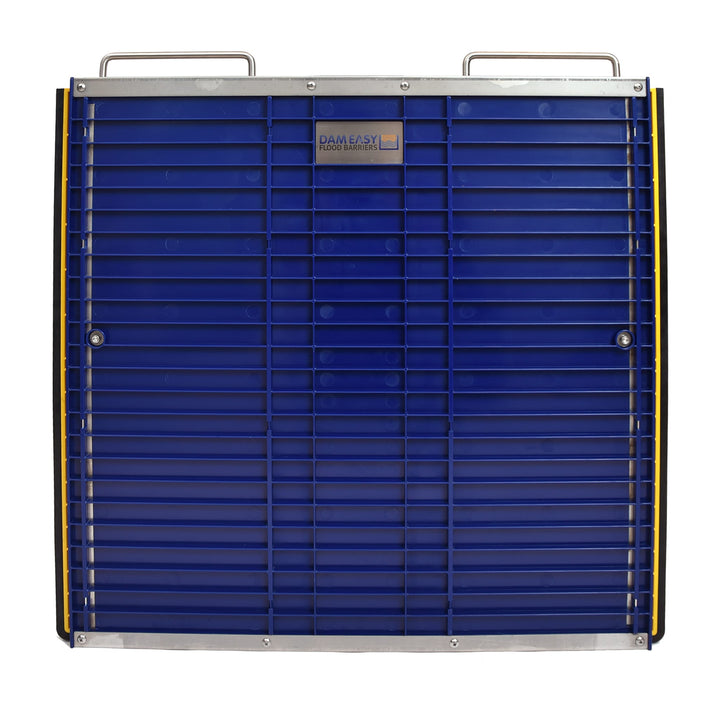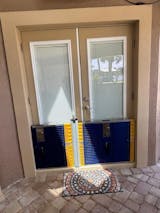So, you’re minding your own business, maybe binge-watching your favorite show or just enjoying a peaceful evening at home, when suddenly, you notice something unsettling: wet stains or leaks on your walls. Cue the panic, right? Not necessarily. While seeing water where it shouldn’t be can be concerning, it’s essential to stay calm and take action. Here’s what you should do if you spot those dreaded wet spots creeping up your walls.
Investigate the Source
Before you go into full-blown crisis mode, try to determine where the water is coming from. Is it a leaky pipe? A roof issue? Maybe even a window that’s not properly sealed? Identifying the source of the water will help you tackle the problem more effectively.
- Leaky Pipes: One of the most common culprits of water stains on walls is leaky pipes. These could be pipes hidden behind walls, under floors, or even in the ceiling. Signs of a leaky pipe include water stains or puddles near plumbing fixtures, dampness or discoloration on walls or ceilings, and the sound of dripping water when no fixtures are in use. To confirm if a pipe is leaking, inspect visible pipes for any signs of corrosion, rust, or moisture, and listen for the sound of running water when no water is being used.
- Roof Issues: Another potential source of water infiltration is a problem with your roof. This could be due to damaged or missing shingles, deteriorated flashing around chimneys or vents, or clogged gutters and downspouts. Signs of a roof leak include water stains on ceilings or walls, dampness in the attic, and water pooling in the attic or on the roof. To check for roof issues, visually inspect your roof for any signs of damage, such as missing or damaged shingles, and check your attic for any signs of water intrusion, such as damp insulation or rafters.
- Window or Door Seals: Improperly sealed windows or doors can also allow water to enter your home, especially during heavy rain or snow. Signs of poor seals include water stains or puddles near windows or doors, drafts, and visible gaps or cracks around windows or door frames. To check for leaks, visually inspect the seals around windows and doors for any signs of damage or deterioration, and feel for drafts or air leaks around the frames. Having flood barriers that would protect windows and doors during snowmelt, storm or flood season would also be a great idea.
-
DamEasy防洪闸门坝 -终极防洪
$899.99
大坝容易®防洪闸门大坝 洪水在世界各地越来越普遍。曾经的百年现象,现在是房主必须面对的季节性趋势。 这正是为什么你需要这个大坝容易防洪闸门大坝! 作为重型和凌乱沙袋的一个很好的替代品,这个屏障提供了第一道防线,防止水进入你家的门窗。当洪水发生时,快速行动的能力至关重要。此防洪屏障可在 5 分钟内安装,为您提供可靠的防洪保护! 不要等到为时已晚。得到这个防洪屏障门坝,现在保护你的房子! … Read More
- Appliances: Household appliances such as washing machines, dishwashers, and water heaters can also be sources of water leaks. Signs of appliance leaks include puddles of water near the appliance, dampness or water stains on floors or walls nearby, and unusual noises or smells coming from the appliance. To check for appliance leaks, visually inspect the appliance for any signs of water accumulation or damage, and listen for any unusual sounds or smells when the appliance is in use.
- Exterior Grading: Poor exterior grading can also contribute to water infiltration into your home. If the ground around your home slopes towards the foundation rather than away from it, water can collect against the foundation and seep into the basement or crawl space. Signs of poor grading include water stains or puddles near the foundation, dampness or musty odors in the basement or crawl space, and cracks in the foundation. To check for grading issues, visually inspect the ground around your home for any signs of pooling water or uneven slopes, and consider regrading or installing French drains to redirect water away from the foundation.
Contain the Damage
If the water is actively leaking, the main thing is to contain the damage as much as possible.
Place buckets or towels under the leak to catch the water and prevent it from spreading further.
If the leak is severe, you might need to shut off the water supply to that area of your home until you can get it fixed.
Dry It Out
Once you’ve contained the immediate issue, it’s time to start drying out the affected area
- Remove Standing Water: Use towels, mops, or a wet/dry vacuum to remove as much standing water as possible from the affected area. The sooner you can remove the water, the better chance you have of preventing further damage.
- Increase Air Circulation: Open windows and doors to allow fresh air to circulate through the room. If weather conditions permit, use fans to increase airflow. Position fans near windows or doors to draw in fresh air from outside and circulate it throughout the room.
- Use Dehumidifiers: Dehumidifiers are excellent tools for removing excess moisture from the air. Place one or more dehumidifiers in the affected area and set them to the highest setting. Empty the water reservoir regularly to ensure continuous operation.
- Remove Wet Materials: Remove any wet carpets, rugs, furniture, or other porous materials from the room. These items can hold onto moisture and prolong the drying process. If possible, take them outside to dry in the sun.
- Lower Humidity Levels: If outdoor humidity levels are lower than indoor levels, consider using box fans to blow air out of the room. This can help lower humidity levels more quickly. Alternatively, you can use a portable air conditioner to help remove moisture from the air.
- Inspect for Hidden Moisture: Even after visible water has been removed, moisture can linger in hidden areas such as behind walls or under flooring. Use a moisture meter to check for hidden moisture and ensure that all areas are thoroughly dried out.
- Monitor Progress: Regularly check the room for signs of progress. Touch walls and flooring to see if they feel damp, and use a moisture meter to check moisture levels. Continue the drying process until moisture levels return to normal.
- Sanitize and Deodorize: Once the room is completely dry, sanitize and deodorize the affected area to prevent mold growth and eliminate any musty odors. Use a disinfectant cleaner to clean surfaces and a deodorizing spray to freshen the air.
Inspect for Mold
Unfortunately, where there’s water, there’s often mold not far behind.
After the area has dried out, thoroughly inspect for any signs of mold growth. This includes not only the walls but also any nearby furniture or belongings that may have been affected by the moisture.
Prevent Future Leaks
Once the immediate issue has been resolved, take steps to prevent future leaks from occurring. This might involve regular maintenance, such as checking your roof for damage or inspecting your plumbing for any signs of wear and tear. Investing in preventative measures now can save you a lot of headaches (and money) in the long run.
- Install Flood Barriers: Flood barriers, such as removable barriers or permanent flood walls, can be installed around vulnerable areas of your home, such as doors, windows, and entry points. These barriers act as physical barriers to prevent water from entering your home during flooding events.
- Seal Entry Points: Inspect doors, windows, vents, and any other openings in your home for gaps or cracks that could allow water to seep in. Seal these entry points with weatherstripping, caulking, or other waterproofing materials to prevent water infiltration.
- Elevate Appliances and Utilities: Elevate appliances, such as washers, dryers, and water heaters, above potential flood levels to minimize damage in the event of a flood. Similarly, elevate electrical panels, HVAC systems, and other utilities to prevent water damage to essential systems.
- Maintain Gutters and Drainage Systems: Keep gutters and downspouts clear of debris to ensure proper drainage away from your home's foundation. Consider installing gutter guards to prevent clogs and extending downspouts to direct water at least five feet away from your home.
- Grade Landscaping Away from the House: Ensure that the ground around your home slopes away from the foundation to prevent water from pooling against the walls. Use landscaping features such as swales, berms, and French drains to direct water away from the house.
- Install Sump Pumps: Consider installing a sump pump in your basement or crawl space to remove excess water in the event of flooding. Ensure that the sump pump is equipped with a battery backup system to operate during power outages.
- Monitor Weather Conditions: Stay informed about weather forecasts and flood warnings in your area. Invest in a weather alert system or app that can provide real-time updates and notifications about potential flooding events.
- Have a Flood Emergency Plan: Develop a flood emergency plan for your family that includes evacuation routes, emergency contacts, and a designated meeting place. Keep important documents, valuables, and emergency supplies in a waterproof container or stored in a safe, elevated location.
Wrapping up, taking care of your home against potential floods is like giving it a big, cozy hug. Whether you're in a flood-prone area or just want that extra layer of protection, getting in touch with us at Dam Easy is a smart move.
When you reach out to us, you're not just getting flood barriers. Nope, you're getting a whole package—from friendly chats and top-notch flood safety tips to picking out the perfect flood barrier kit for your place. We're here to make sure your home stays snug and dry, rain or shine.
So, why wait? Let's chat today and get your home all set up with Dam Easy flood barriers. With our awesome team by your side, you can relax knowing your home is ready to tackle whatever Mother Nature throws its way.





















